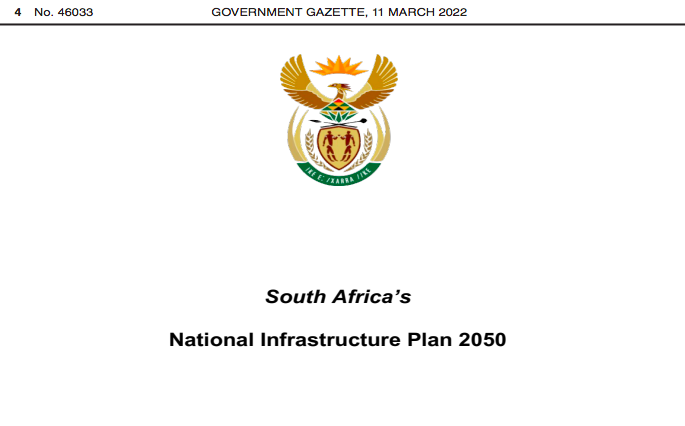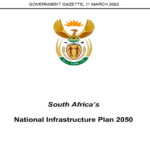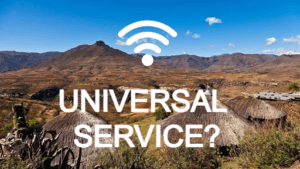Date Published : usp_custom_field : 11 March 2022
The government’s SA Connect aimed to deliver widespread broadband access to 90% of the country by 2020 but the 2016 targets have not yet been met.
The new National Infrastructure Plan (NIP) 2050, was gazetted on Friday, 11 March.
In the NIP document, government has outlined a “vision for a seamless digital infrastructure”. The document, published by the department of public works & infrastructure, highlights what government wants to achieve in ICT and other sectors by the end of the decade.
The NIP proposes a multitude of solutions. Highlights include:
- There must be continuous improvement in driving towards universal readiness for a digital world, including the achievement of universal broadband access, digitisation of government services, deepening of ICT skills and capabilities, and enablement of e- commerce, digital finance and digital entrepreneurship.
- There must be a strong and competitive private sector that continues to invest, maintain, upgrade and innovate.
- A public sector broadband and digital services delivery model must effectively engage the private sector.
- There must be sufficient and sustainable public and private finance that enables continuous improvement in delivering universal broadband and supportive ICT services to underserved communities and households and to public institutions.
- Government must have substantial internal professional and technical capability in procuring and overseeing the implementation of universal broadband delivery and e- government services that operate at a global standard suited to South African conditions and that are continuously improving.
- Spectrum must be treated as a national resource that is optimised for South Africa’s development. It should be done in a way that supports enhanced competition as well as universal access obligations.
These are some of the ways government wants to achieve its goals in ICT:
- High-speed broadband must be available in underserved areas and must be affordable and accessible to low-income communities.
- Government services and buildings must be digitally enabled. All government buildings must be connected with high-speed broadband.
- Regulation must enable competitive and universally accessible broadband. Communications regulator Icasa must be held accountable for the quality of regulation with respect to spectrum, pricing, infrastructure sharing and similar.
- Government capacity to design and procure digital infrastructure and services must be technically sound. There will be commitment to institutional stability, good governance and appropriate “capacitation” through senior appointments.
- Private sector participation in achieving universal broadband access is key. The model of delivery will increasingly leverage vibrant private sector participation and blended financing. – © 2022 NewsCentral Media





